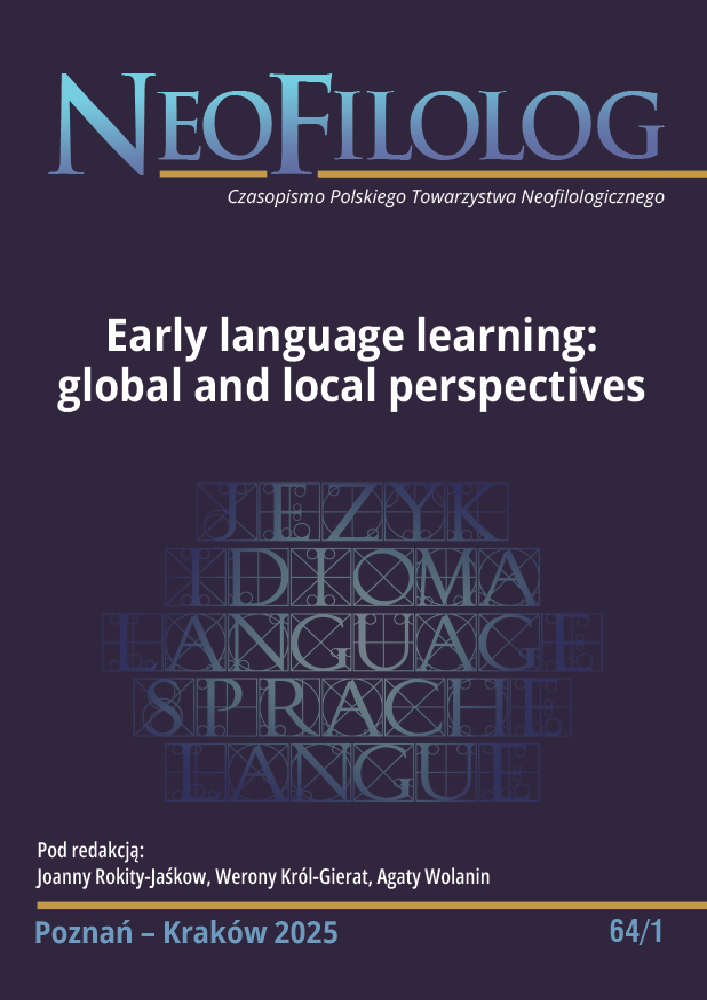Abstrakt
Teachers represent important pragmatic models for their students (Barón, et al., 2020). While teacher talk has been viewed as providing learners with a limited variety of pragmatic language (e.g., Nikula, 2002), there has also been evidence that it can be pragmatically attuned to the learners’ needs (Martí, Portolés, 2019). The present study is an analysis of directives in the teacher talk of five L1 Croatian teachers working with primary school EFL learners (aged 12/13). Five 45-minute EFL lessons were analysed, one for each teacher, with the aim of identifying and quantifying the occurrences of directives in instructional and regulative classroom discourse. A further qualitative analysis provides insight into how the teachers’ choice of directives relates to contextual matters in respect to their realisation (i.e., degree of directness, use of modifying strategies). The results are in line with previous studies, with teachers showing an overall preference for directness (e.g., Chen, Tseng, 2015; Liu, Hong, 2009). However, all of the teachers used directives to build interaction and scaffold their students’ language, while maintaining a relatively informal atmosphere, which may be linked to their choice of more direct forms. Ultimately, the highly diverse individual styles of the teachers seemed to be reflected most in their preference for particular forms.
Bibliografia
Basra S., Thoyyibah, L. (2017), A speech act analysis of teacher talk in an EFL classroom. “International Journal of Education”, No 10(1), pp. 73–81. DOI: https://doi.org/10.17509/ije.v10i1.6848
Barón J., Roquet, H., Evnitskaya, N., Navarro, N. (2020), Pragmatics in teacher talk: the case of pre-primary education. “English Language Teaching”, No 13(8), pp. 168–177. DOI: https://doi.org/10.5539/elt.v13n8p168
Chen C. C., Tseng, D. S. (2015), A pragmatic study on college EFL teachers’ and students’ requesting behaviors in the classrooms. “International Journal of Languages, Literature and Linguistics”, No 1(4), pp. 250–256. DOI: https://doi.org/10.18178/IJLLL.2015.1.4.48
Christie F. (2000), The language of classroom interaction and learning, (in:) Unsworth, L. (ed.), Researching language in schools and communities. Functional linguistics perspectives. London: Cassell, pp. 184–205.
Cohen A. D. (2018), Learning pragmatics from native and nonnative language teachers. Bristol: Multilingual Matters. DOI: https://doi.org/10.21832/COHEN9924
Curtain C. (2023), QualCoder 3.2. https://github.com/ccbogel/QualCoder/releases/tag/3.2
Dalton-Puffer C. (2005), Negotiating interpersonal meanings in naturalistic classroom discourse: Directives in content-and-language-integrated classrooms. “Journal of Pragmatics”, No 37(8), pp. 1275–1293. DOI: https://doi.org/10.1016/j.pragma.2004.12.002
Dalton-Puffer C., Nikula, T. (2006), Pragmatics of content-based instruction: Teacher and student directives in Finnish and Austrian classrooms. “Applied Linguistics”, No 27(2), pp. 241–267. DOI: https://doi.org/10.1093/applin/aml007
Drew I., Hasselgreen, A. (2008), Young language learner (YLL) research: An overview of some international and national approaches. “Acta Didactica Norge”, No 2(1), pp. 1–18. DOI: https://doi.org/10.5617/adno.1024
Ellis R. (1992), Learning to communicate in the classroom: A study of two language learners’ requests. “Studies in Second Language Acquisition”, No 14(1), pp. 1–23. DOI: https://doi.org/10.1017/S0272263100010445
Fasel Lauzon V., Berger, E. (2015), The multimodal organization of speaker selection in classroom interaction. “Linguistics and Education”, No 31, pp. 14–29. DOI: https://doi.org/10.1016/j.linged.2015.05.001
Glaser, K. (2018), Enhancing the role of pragmatics in primary English teacher training. “Glottodidactica: An International Journal of Applied Linguistics”, No 45, pp.119–131. DOI: https://doi.org/10.14746/gl.2018.45.2.06
Ho D. G. E. (2005), Why do teachers ask the questions they ask? “Regional Language Centre Journal”, No 36(3), pp. 297–310. DOI: https://doi.org/10.1177/0033688205060052
Hosoda Y., Aline, D. (2013), Two preferences in question–answer sequences in language classroom context. “Classroom Discourse”, No 4(1), pp. 63–88. DOI: https://doi.org/10.1080/19463014.2013.783497
Lee Y.A. (2006), Respecifying display questions: Interactional resources for language teaching. “TESOL Quarterly”, No 40(4), pp. 691–713. DOI: https://doi.org/10.2307/40264304
Liu Y., Hong, H. (2009), Regulative discourse in Singapore primary English classrooms: teachers’ choices of directives. “Language and Education”, No 23(1), pp. 1–13. DOI: https://doi.org/10.1080/09500780802152812
LoCastro V. (2012), Pragmatics for language educators. A sociolinguistic perspective. London: Routledge. DOI: https://doi.org/10.4324/9780203850947
Martí O., Portolés, L. (2019), Is teacher talk for very young language learners pragmatically tuned? Directives in two EAL classrooms, (in:) Salazar-Campillo P., Codina-Espurz V. (eds.), Investigating the learning of pragmatics across ages and contexts. Leiden: Brill, pp. 87–122. DOI: https://doi.org/10.1163/9789004409699_006
Nikula T. (2002), Teacher talk reflecting pragmatic awareness: A look at EFL and content-based classroom settings. “Pragmatics. Quarterly Publication of the International Pragmatics Association (IPrA)”, No 12(4), pp. 447–467. DOI: https://doi.org/10.1075/prag.12.4.03nik
Romero-Trillo J. (2002), The pragmatic fossilization of discourse markers in non-native speakers of English. “Journal of Pragmatics”, No 34(6), pp. 769–784. DOI: https://doi.org/10.1016/S0378-2166(02)00022-X
Sato S. (2008), Use of “please” in American and New Zealand English. “Journal of Pragmatics”, No 40(7), pp. 1249–1278. DOI: https://doi.org/10.1016/j.pragma.2007.09.001
Schauer G. A. (2022), Teaching L2 pragmatics to young learners: A review study. “Applied Pragmatics”, No 4(2), pp. 137–158. DOI: https://doi.org/10.1075/ap.00006.sch
Waring H. Z., Hruska, B. L. (2012), Problematic directives in pedagogical interaction, “Linguistics and Education”, No 23(3), pp. 289–300. DOI: https://doi.org/10.1016/j.linged.2012.06.002
Licencja
Prawa autorskie (c) 2025 Eva Jakupčević

Utwór dostępny jest na licencji Creative Commons Uznanie autorstwa – Bez utworów zależnych 4.0 Międzynarodowe.
Przedstawiany utwór (artykuł) upubliczniany jest na podstawie umowy z autorem i na licencji Creative Commons Attribution-NoDerivatives 4.0 International (CC BY-ND 4.0).
Użytkownicy mają obowiązek podania wraz z rozpowszechnionym utworem, informacji o autorstwie, tytule, źródle (odnośniki do oryginalnego utworu, DOI) oraz samej licencji;
- bez tworzenia utworów zależnych,
- utwór musi być zachowany w oryginalnej postaci.
Uniwersytet im. Adama Mickiewicza w Poznaniu zachowuje prawo do czasopisma jako całości (układ, forma graficzna, tytuł, projekt okładki, logo itp.).

